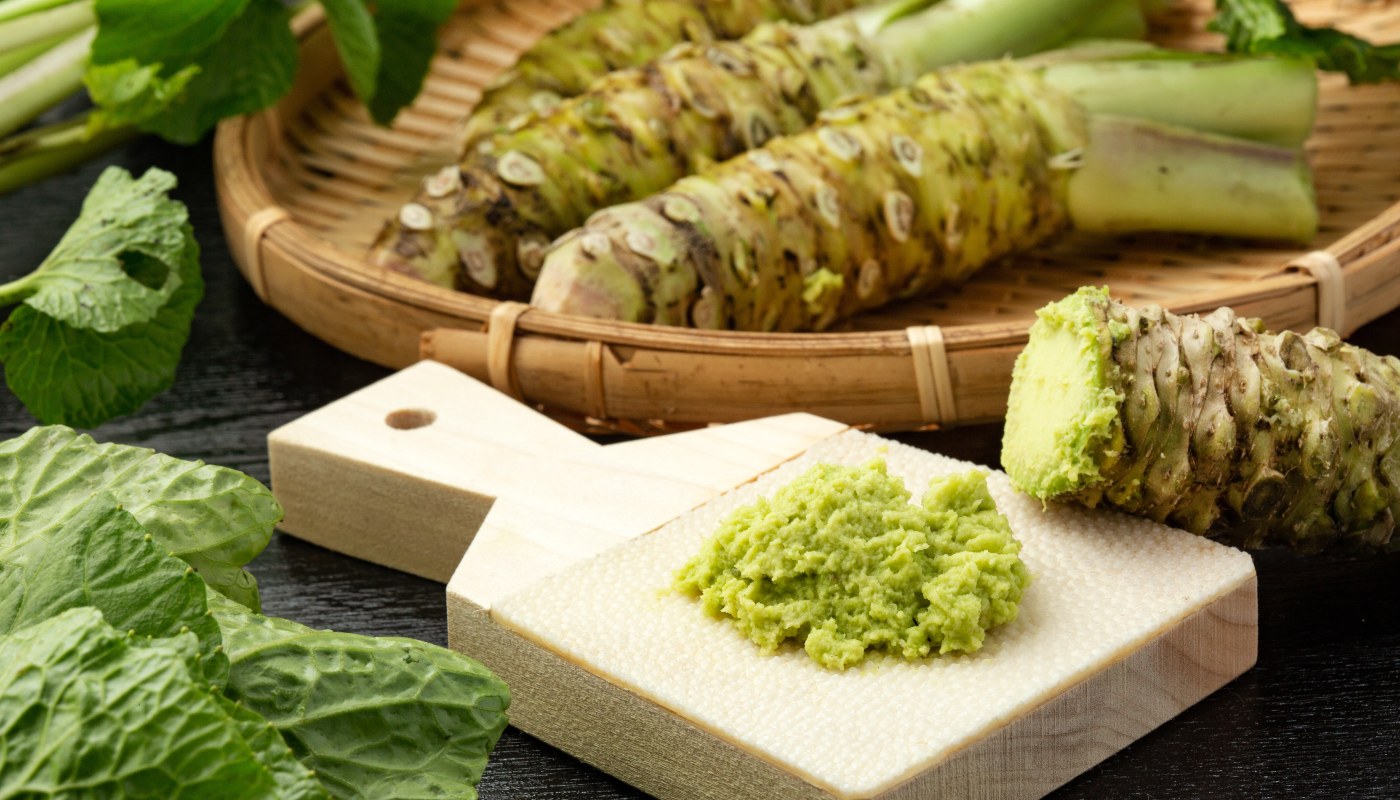Benefits and properties of wasabi
Discover the properties and nutritional benefits of wasabi. We tell you where it is extracted from and what the contraindications of the spicy ingredient are for sushi. Don’t miss out!
fresh food
Share

Wasabi is one of the best-known ingredients in Japanese cuisine and one of the hottest sushi condiments. With its characteristic green colour, wasabi serves to enhance the flavour of fish and produces an extreme kick that, unlike chilli peppers, passes relatively quickly.
Where is wasabi extracted from? This ingredient is obtained from the rhizome of the plant of the same name (called Wasabia japonica), although it is also known as "Japanese horseradish". It is difficult to cultivate, as the plant grows in water under very specific climatic conditions, which means that it is not possible to grow wasabi on a large scale in many areas.
To enjoy it with sushi, it is recommended to add a tiny amount of wasabi with the tip of a chopstick or to the soy sauce in which each piece of sushi is to be dipped. As an ingredient, wasabi can also be served mixed into mayonnaise and is a great accompaniment to fish or even meat. Let's take a closer look at the characteristics of this particular substance.

Properties and benefits of wasabi
Among wasabi's properties, we should highlight the fact that it is an energy food with anti-inflammatory properties and facilitates the digestion of food. It is also a product with a lot to offer, as the benefits of wasabi demonstrate. With great antibacterial powers, it also acts as an antioxidant (prevents ageing) and provides vitamin C (strengthens the immune system).
Finally, wasabi has the following nutritional value:
- Calories: 142 kcal
- Carbohydrates: 30.6g
- Fat: 0.8g
- Protein: 6.2g
- Fibre: 10.1g
Wasabi contraindications
Like virtually any food, wasabi has some contraindications. Its use is not recommended in cases of gastritis and gastric ulcers, as well as in persons suffering from hypertension or undergoing anti-inflammatory treatment. If consumed in excess, it can also cause haemorrhoids.
Wasabi recipes
There are many recipes with wasabi that can be prepared at home. For example, you can add it to dishes with tuna or give an extra kick to a poke bowl or maki sushi, if you fancy trying your hand at making home-made sushi! Its flavour sure makes a difference, we can assure you!






